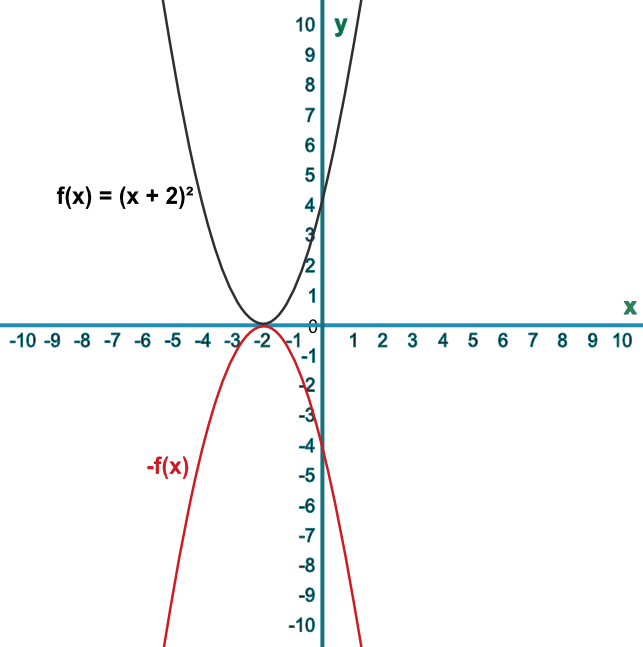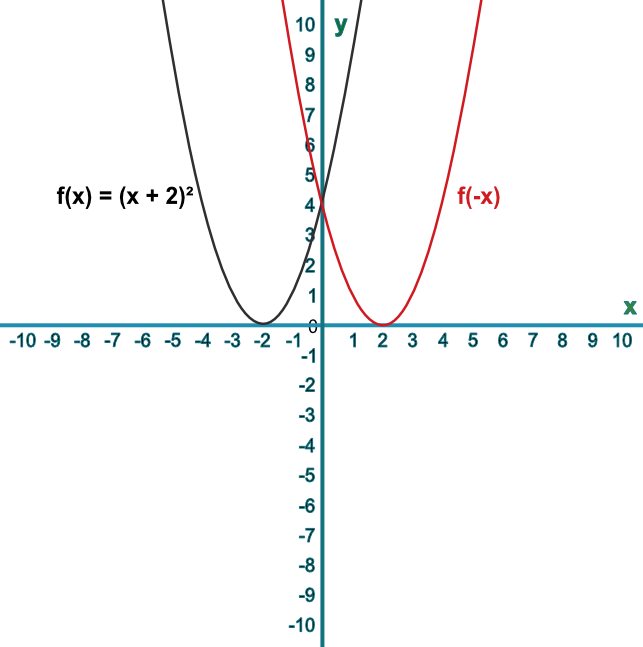Graphs can be reflected by applying negative values to a function.
If the negative value is applied before the function takes place, then the result is a reflection in the y-axis.
If the negative value is applied to the result of the function, then the reflection will take place in the x-axis:
Sketch the graph of the function `f(x)=x^2`. On the same graph, sketch `-f(x)`.
Describe the transformation.
A negative value applied after the function is evaluated will reflect the curve in the `x`-axis.
Answer: The curve is reflected in the `x`-axis.

Sketch the graph of the function `f(x)=x^2`. On the same graph, sketch `f(-x)`.
Describe the transformation.
A negative value applied before the function is evaluated will reflect the curve in the `y`-axis.
Answer: The curve is reflected in the `y`-axis.

See also Expressions as Functions and Reflection